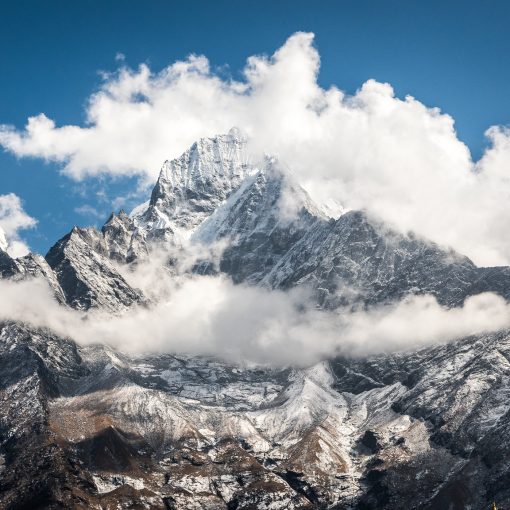This year’s EGU General Assembly has passed and we presented a number of topics in 4 different sessions.
In a session with numerous outstanding talks on Mountain Climates on Wednesday, Joseph Shea presented initial results from an analysis of glaciological and hydrological sensitivities in modeling in the Hindukush Himalaya region.
On Thursday, Walter Immerzeel opened the session on debris covered glaciers with a solicited talk, summarizing our recent efforts in quantifying mass changes on the debris covered glaciers. During the same row of talks Jakob Steiner looked at the spatial and temporal evolution of ice cliffs and lakes in the Langtang catchment in the recent decade.
The round of talks was followed by a poster session with 20 submissions specifically on the topic of debris covered glaciers, underlining the increased attention the issue has received recently. Philip Kraaijenbrink presented his work on the monitoring of glaciers using unmanned aerial vehicles. Pascal Buri presented some progress on the distributed modeling of ice cliff backwasting in the catchment. Evan Miles provided insight into the temporal change of supraglacial lakes and how to extract this information from Landsat imagery. He also presented recent work on deriving surface roughness oft he glacier with photogrammetric analysis. The contribution to this session was rounded off by Pascal Egli’s work on deriving debris thickness from remotely sensed temperature data. Jakob Steiner also presented some insights from analysis of the development of a large alluvial fan in the Langtang catchment in a session on sediment transport in pro-glacial environments.
The week ended with Tobias Bolch presenting Silvan Ragettli’s recent work on mass balance change in the Langtang catchment during the last decade.
- Glaciological and hydrological sensitivities in the Hindu Kush – Himalaya
Joseph Shea and Walter Immerzeel - The role of debris covered glaciers in the high altitude water cycle in the Himalayas
Walter Immerzeel and Francesca Pellicciotti - Heterogeneous response of debris-covered and debris-free glaciers to climate change in Langtang Himal determined by geodetic mass balance measurements
Silvan Ragettli, Tobias Bolch, and Francesca Pellicciotti - Life and death of ice cliffs and lakes on debris covered glaciers – insights from a new dataset from the Nepalese Himalaya
Jakob Steiner, Pascal Buri, Evan Miles, Silvan Ragettli, and Francesca Pellicciotti - A Landsat analysis of variability of supraglacial ponds for the debris-covered glaciers of the Langtang Valley
Evan Miles, Ian Willis, Neil Arnold, and Francesca Pellicciotti - Characterizing aerodynamic roughness length (z0) for a debris-covered glacier: aerodynamic inversion and SfM-derived microtopographic approaches
Evan Miles, Jakob Steiner, Fanny Brun, Martin Detert, Pascal Buri, and Francesca Pellicciotti - Multi-temporal high resolution monitoring of debris-covered glaciers using unmanned aerial vehicles
Philip Kraaijenbrink, Walter Immerzeel, Steven de Jong, Joseph Shea, Francesca Pellicciotti, Sander Meijer, and Arun Shresta - Investigating ice cliff evolution and contribution to glacier mass-balance using a physically-based dynamic model
Pascal Buri, Evan Miles, Silvan Ragettli, Fanny Brun, Jakob Steiner, and Francesca Pellicciotti - Applying an energy balance model of a debris covered glacier through the Himalayan seasons – insights from the field and sensitivity analysis
Jakob Steiner, Francesca Pellicciotti, Pascal Buri, and Ben Brock - An improved method to compute supra glacial debris thickness using thermal satellite images together with an Energy Balance Model in the Nepal Himalayas
Pascal Egli, Alvaro Ayala, Pascal Buri, and Francesca Pellicciotti - Drivers for the development of an alluvial fan in a high-altitude glaciated catchment
Jakob Steiner, Evan Miles, and Silvan Ragettli


